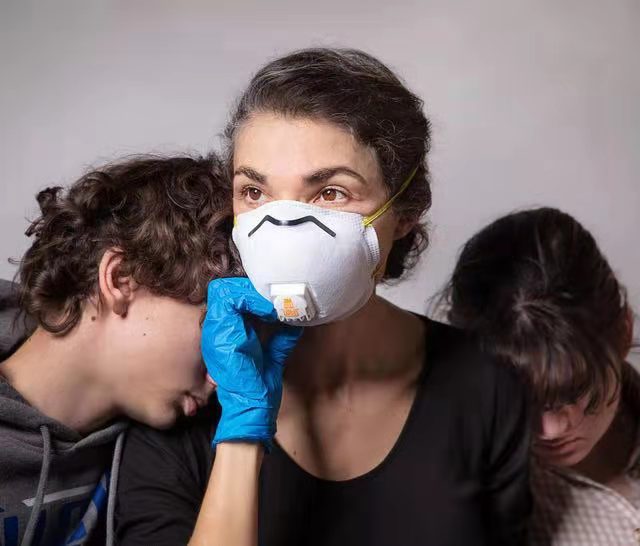
This year the suddenly appearing coronavirus dominates discussion topic worldwide, causes significant inconvenience to everyone’s daily life. The debate about the effect of wearing masks not only highlights the anxiety and uncertainty of the public towards the authority but also brings unavoidable physical distance among people. The mask along with keeping advised physical distance builds an invisible but thick wall between people, which drops social interactions down to an extremely low level. How to recognize the identity, to manage relations, to adjust life becomes an important topic for the ordinary.
Under such circumstance, Elinor Carcucci, a renowned Israel American photographer who focuses on exploring notions of identity by using herself, objects, and people around her to express her understanding of daily life, produces a series of photographs about life and people during the coronavirus period – buying hand sanitizer and masks, preparing enough necessities to pass sufficiently long isolation with families, dealing with the difficulties of self-work and children’s study in a limited space, making video talk with friends and families far away, following updates of pandemic and governmental measures, etc.
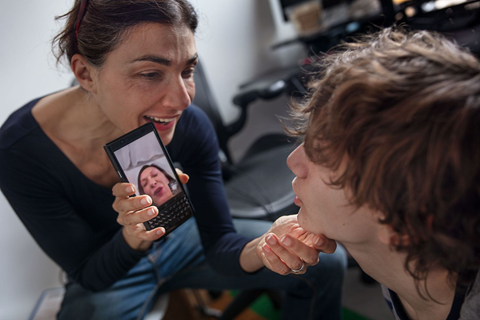
As time passing by, the pandemic doesn’t show any predictable fading trend but only gets more serious, she feels growing anxiety and uncertainty of the future, to prepare for the worst case, she even made her children a list consisting of all available bank accounts, life insurances, passwords, the contact information of some important people like their accountant, etc.
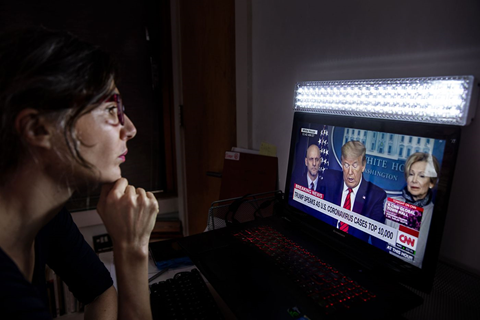
Among all her shooting work during the pandemic, the “Love in the Time of Corona”, in which she wears a mask and glove, her children bury their heads in the space of her shoulders, is widely spread online as it highlights the helplessness and strongness of a mother under the social crisis.
The poses of Love in the Time of Corona imitate theMigrant Mother which captured a wrinkled mother and her two children put their heads on her. Migrant Mother was shot by Dorothea Lange in 1936, while she was employed by the U.S. government’s Farm Security Administration (FSA) program. The famous picture was formed during the Great Depression to raise awareness of and provide aid to impoverished farmers.
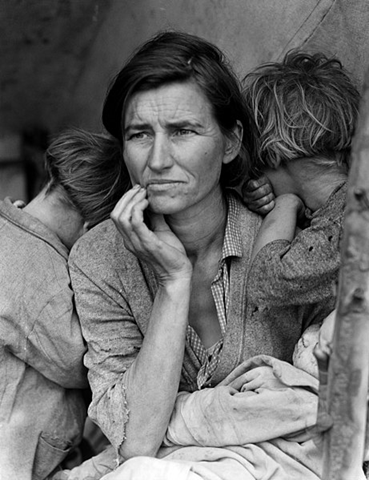
The similarities of the deep maternal worries of a crisis inspired Carucci to make an artistic interaction across the time. Migrant Mother was during a severe worldwide economic depression, Love in the Time of Corona is during a severe worldwide health crisis along with gradually appearing worldwide economic depression, their similar backgrounds bring interesting interactions that two moms from different times, having similar worries and anxieties from a situation of own family to the uncertainty of unknown future. Children of both pictures seem helpless, relying on their mother, the symbol of safety, strength, support, and stability, such “powerful” mothers are just negligible existence in the world. They can protect children within the family but can do nothing more than that when facing a global crisis. Mothers are also helpless, worried, and anxious, but they have to support children and calm them down.
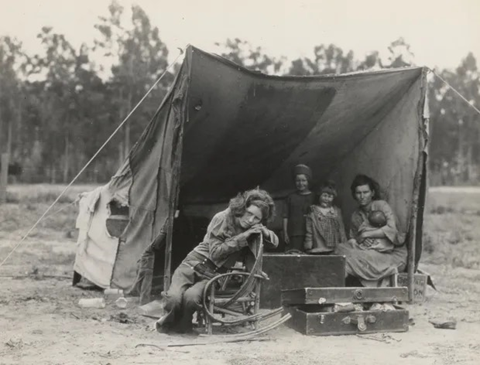
There are two details differing Love in the Time of Corona from Migrant Mother. The first difference lies in the photography technique, Love in the Time of Corona applies autobiography, which plays a key role in the western culture and has become to represent a key issue of our time: the relationship of the private to the public. Migrant mother also expressed the relationship between the private and the public, but the photographer was not the family to experience their dilemma, he was a witnesser and a recorder. The second difference is the ear characteristic, Migrant Mother even suffered from a bad time, but has not directly faced death with uncertain probability, the problems could be traced so the fear could be maintained to a certain degree. Love in the Time of Corona is during a period that has a high possibility to walk towards death without realized, the virus is hard to be traced and still develops, the mother wants to protect her children but does not know exactly how and the effects of some of her actions – wearing mask and gloves. This unsure but growing fear contains more emotions, but with those protections, we cannot see through her face, the intensity spreads around her body.
As an autobiography work, Love in the Time of Corona highlights multiple identities of Elinor Carcucci: a photographer to lead deeper insight into a great event by fixing a single moment, and a mother to represent a strong force of life through being a harbor for a single-family. This work not only honestly reflects her usual life, but also hundreds of thousands of families’ lives during the coronavirus pandemic, which can touch our hearts deeply like so.
(Source: The Cut / Elinor Carucci / Artsy / MoMA / History)



